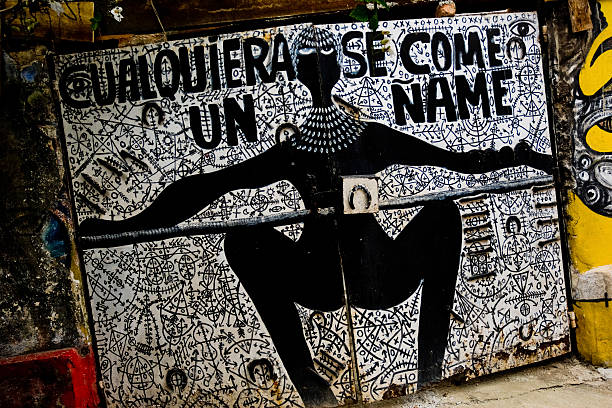How India is becoming more vulnerable to extreme weather - DW - 06/10/2025
Extreme weather events like floods, heatwaves and cyclones are happening more frequently in India, with widespread negative impacts on health, development, and the economy.
An annual report on the state of India's environment released last week by the Centre for Science and Environment (CSE), a New Delhi-based public interest research and advocacy organization, shows how the extreme weather affects large parts of India's population.
The report showed that nearly 3,000 people died, 2 million hectares of crops were ruined, and 80,000 homes were destroyed in extreme weather-related events last year. It also showed that extreme weather events happened somewhere in India on 88% of days in 2024.
CSE director Sunita Narain told DW that the latest report should be a wake-up call for policymakers.
"This report is important and emphasizes the urgent need for stronger environmental governance, improved health care infrastructure, and ambitious climate policies to address these interconnected crises," Narain said.
Large Indian cities frequently experience the worst air quality levels of anywhere in the world.
Since 2021, residents in 13 Indian cities, including Delhi, have breathed unsafe air one in every three days, according to the report. Life expectancy in Delhi is nearly eight years shorter due to air pollution, according to various studies.
Even though the main summer months — from April to June — are always hot in India, temperatures have grown more extreme in the past decade. The intensity of rain and flooding has also increased.
About 80% of India's population lives in regions that are considered vulnerable to disasters such as heat waves or severe flooding, the report said.
"This report lays bare an uncomfortable truth. India is in the eye of a perfect storm where climate chaos, health crises, and development shortfalls are colliding," Abinash Mohanty, head of climate change and sustainability at IPE Global, an international development organization, told DW.
Mohanty said that the data found in the report corresponds with the key findings from IPE Global's study in 2024, which showed that 80% of districts in India are susceptible to extreme weather events.
"This is more than a statistical alarm, it is a lived crisis unfolding in real time," he said.
Mohanty added that India's development model needs to be "radically reimagined" to adapt to hotter temperatures, biodiversity loss, and water emergencies."
"The consequences of inaction today will become irreversible realities tomorrow," he said.
Narain from the CSE said the Indian government can do more to help develop adaptation strategies by investing in data collection.
"The report does not discount the enormous strides that India has made in many fields. What it essentially does is hold up a mirror and make us acquainted with the fact that we need to sit back and take note of the trends, make sense of them, and initiate corrective actions," said Narain.
"Unless we have clear, credible data, there can be no solutions or policies. Our strong plea therefore is that we need more, not less data. We need to be transparent," said Narain.
Akshay Deoras, a climate scientist at the University of Reading, told DW that the CSE report should shake Indian policymakers, industries, and citizens out of being complacent about the impacts of climate change.
"Climate resilience is no longer optional — it's an existential imperative," Deoras said.
Deoras added that he believes India must move from reactive relief to anticipatory planning and from climate rhetoric to grounded, scalable action through establishment of climate risk observatories.
"The clock is ticking — and there are no second chances," said Deoras.
"This report lays bare the accelerating impact of climate change on India. Experiencing extreme weather on so many days in a year is not a statistical fluke — it signals a shifting baseline," he added.
This will lead to compounded effects like crop losses, rising displacement, and biodiversity stress.
"Without an immediate investment in adaptation, early warning systems, and reduction in the emission of greenhouse gases, we are heading toward a destabilized climate future, especially for the next generation," said Deoras.
Edited by: Wesley Rahn
You may also like...
The Names We Carry: Why Africa’s Many-Name Tradition Shouldn’t Be Left Behind

"In many African communities, a child's birth is marked with a cascade of names that serve as fingerprints of identity, ...
WHY CULTURAL APPROPRIATION ISN’T ALWAYS OFFENSIVE

In a world of global fusion, is every act of cultural borrowing theft—or can it be respect? This thought-provoking essay...
Africa’s Health Revolution: How a New Generation is Redefining Global Wellness from the Ground Up

Move beyond the headlines of health challenges. Discover how African youth and innovators are using technology, traditio...
Kwame Nkrumah: The Visionary Who Dreamed of a United Africa
(13).jpeg)
Discover the powerful legacy of Kwame Nkrumah, Ghana’s first president and a pioneer of Pan-Africanism, whose vision for...
Meet the Theremin: The Weirdest Instrument You’ve Never Heard Of

From sci-fi movies to African studios? Meet the theremin—a touchless, ghostly instrument that’s making its way into Afri...
Who Told You Afro Hair Isn’t Formal?

Afro hair is still widely seen as unprofessional or “unfinished” in African society. But who decided that coils, kinks, ...
1986 Cameroonian Disaster : The Deadly Cloud that Killed Thousands Overnight

Like a thief in the night, a silent cloud rose from Lake Nyos in Cameroon, and stole nearly two thousand souls without a...
How a New Generation is Redefining Global Wellness from the Ground Up

Forget fast fashion. Discover how African designers are leading a global revolution, using traditional textiles & innov...




